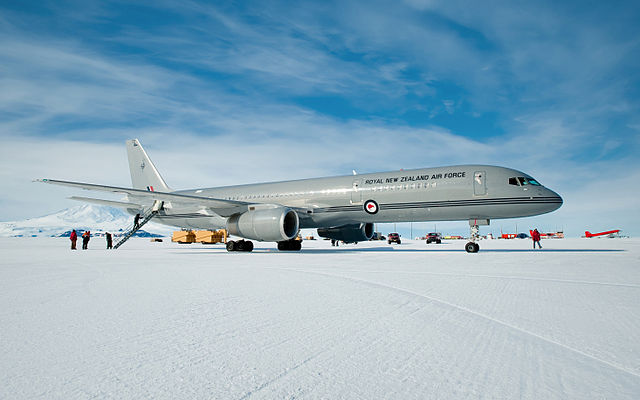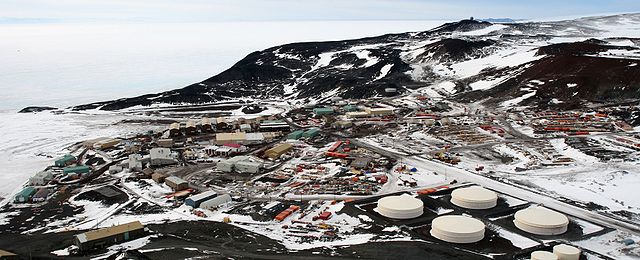Pegasus Field was an airstrip in Antarctica, the southernmost of three airfields serving McMurdo Station. It closed due to excessive melting in the summer season caused by warmer temperatures combined with dust and dirt blown in from nearby Black Island. The last flight was on December 8, 2016 and it was replaced by Phoenix Airfield with flights starting in February 2017.
White ice runway at Pegasus Field
United States Air Force C-5 Galaxy being off-loaded at Pegasus Field.
RNZAF Boeing 757 lands at Pegasus Airfield on the Ross Ice Shelf during its maiden flight to Antarctica.
McMurdo Station is an American Antarctic research station on the southern tip of Ross Island, which is in the New Zealand–claimed Ross Dependency on the shore of McMurdo Sound in Antarctica. It is operated by the United States through the United States Antarctic Program (USAP), a branch of the National Science Foundation. The station is the largest community in Antarctica, capable of supporting up to 1,500 residents, and serves as one of three year-round United States Antarctic science facilities. All personnel and cargo going to or coming from Amundsen–Scott South Pole Station first pass through McMurdo. McMurdo Station continues to operate as the hub for American activities on the Antarctic continent. By road, McMurdo is 3 kilometres (1.9 mi) from New Zealand's smaller Scott Base.
McMurdo Station from Observation Hill
Nuclear reactor commemorative plaque
The supply ship MV American Tern during cargo operations at McMurdo Station during Operation Deep Freeze 2007. The square building in the foreground is Discovery Hut.
McMurdo Station from above.







